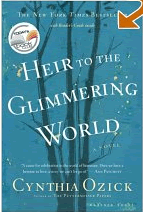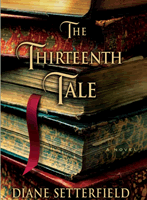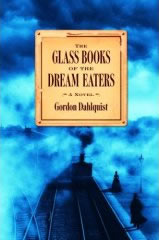I’m way behind on writing little synopses of the books I’ve finished this year, so I’m consolidating this latest list. Looking back, this happened about this time of year last year, too. Must be a trend. Anyways, here’s what I read since whenever.
Sword of the Guardian: A Legend of Ithyria (Legends of Ithyria)
by Merry Shannon
Cheesy lesbian fantasy fiction novel. Very much so on the cheesy. Not even worth describing the silly plot; except that I picked up because it had a female cross-dressing character in it. I did read the whole thing, however, because the lesbian sex scenes weren’t terrible. (I have my priorities.)
The Secret History of the Pink Carnation
by Lauren Willig
I’ve picked up all three in this series on the remaindered shelves very cheap – and it shows. The premise is quite fun, but the plots are a bit too silly. Set in Regency England and Napoleonic France, they revolve around a “Scarlet Pimpernel” character who is undermining Napoleon’s attempted invasion of England, and having romantic adventures as well. This setting is juxtaposed with a modern-day chick-lit romantic heroine who is reading the manuscripts of the historical story. I may get around to reading the sequels someday, but given the goofiness level, they’re not high on my list.
Rebecca
by Daphne Du Maurier
This was one of our book club selections, and I picked it up to read it, but just didn’t get far. For one thing, I think I read it when I was a kid. And for another it was just a bit too much like Jane Eyre for me – and having read the Thirteenth Tale (which was good) and Heir to the Glimmering World (which wasn’t) lately, I couldn’t get into the “Manor House in the country, young girl adrift upon the world at the whims of unusual families” aspects of it. From the discussion, I should probably have given it a few more pages to let it hook me, but I think my timing was just off. I may go back to it at some future time.
On Beauty
Zadie Smith
One of our bookclub selections; I really dug it. I didn’t realize when reading that it was an homage to E.M. Forster’s Howards End. (Perhaps I should read that? Or at least a review of On Beauty? Hmm.) From Amazon.com: “Howard Belsey is a middle-class white liberal Englishman teaching abroad at Wellington, a thinly disguised version of one of the Ivies. He is a Rembrandt scholar who can’t finish his book and a recent adulterer whose marriage is now on the slippery slope to disaster.”
EZ66 Guide for Travelers
Jerry McClanahan
This is a great resourse to take take with you on your Route 66 trip – specifically for helping you find Route 66 attractions, and the off the beaten path remaining sections of the road, many of which are no longer marked. It has detailed turn-by-turn directions and maps of the route by seasoned traveler McClanahan, who has explored the entire Route many times. Unfortunately, it’s sometimes hard to tell how important or visit-worthy an attraction is from this book, so if you have a short period to take it all in and need to be selective, I’d recommend the following book, too:
Route 66 Adventure Handbook
by Drew Knowles
This is the second book I’d highly recommend taking with you on a Route 66 trip. This one is a bit more readable if you’re just trying to get information about Route 66 attractions and if you’re trying to assess how large, interesting or “not-to-be-missed” a particular attraction is along the way. We flipped back and forth between this book and the EZ guide and were fairly successful at fitting the highlights into our 2 1/2 week trip. To see everything, you’d really need a month.
Hogs on 66 : best feed and hangouts for road trips on Route 66
by Wallis, Michael.
Geared towards Harley riders, but a really handy reference for anyone looking for the best diners and stops along the route. I read this ahead of time and had some idea of some of the excellent places to eat along the way.
Route 66 lost & found : ruins and relics revisited and
Route 66 lost & found : ruins and relics revisited, volume 2
by Olsen, Russell A.
Beautiful photography, but a bit of melancholy to it. The author takes photos of “Then and Now” pictures of stops along Route 66 – recreating the scenes of old postcards and photographs with what the same building looks like today. In most cases, time hasn’t been kind. A great book to read either before or after your trip in preparation.
Route 66: Images of America’s Main Street
William Kaszynski
Like the books above, a great before or after traveling book to read to get a history of America’s Main Street.
Roadside Giants
Brian and Sarah Butko
When I first saw this book, I was worried that it was a book form of my “Big Things” photo galleries, but it’s a very different book than what I would write, and definitely worth owning if you love roadside attractions. They aren’t interested in photographing or logging every “big thing” across the country, just providing a cross-section of the most known, famous or unique ones.
Over the Edge: Death in Grand Canyon
by Thomas M. Myers, Michael P. Ghiglieri
DO NOT read this book while you are at the Grand Canyon. Also, DO NOT read this book when you are leaving the Grand Canyon, but are traveling further west on Route 66 on the Oatman Highway over the Black Mountains through Sitegreaves Pass. Either read the book when you are safely on flat, solid ground, or better yet, before you go to the Canyon in the first place, so you don’t do something stupid and fall off like the many, many people in this book. A key bit of info to take away from the book, from Amazon.com: “The authors show that most of the deaths, whether of tourists, prospectors, or experienced adventurers, occurred when people failed to pay attention to warning signs or did not use common sense; others are attributed to high testosterone levels. The episodes are engrossing, but one becomes sated with the details after a while.”
Harry Potter and the Deathly Hallows
by J.K. Rowling
If you really need me to review this for you, you must be living under a rock of some sort. I loved it, of course.
Everything is Miscellaneous: The Power of the New Digital Disorder
David Weinberger
From Amazon.com: “In Everything Is Miscellaneous, David Weinberger charts the new principles of digital order that are remaking business, education, politics, science, and culture. In his rollicking tour of the rise of the miscellaneous, he examines why the Dewey decimal system is stretched to the breaking point, how Rand McNally decides what information not to include in a physical map (and why Google Earth is winning that battle), how Staples stores emulate online shopping to increase sales…” A fun read.
On the Road
by Jack Kerouac
Our next bookclub read, so of course the first rule of bookclub is invoked.
Route 66 Remembered
by Michael Karl Witzel
This is the book I really wish I’d read before they trip, because I would have gotten the most out of it. A nice history of the Route 66 that charts the rise of the road and it’s institutions – gas, food, lodging. The really great part of the book is the personal accounts at the end; real people’s stories of traveling on The Mother Road in it’s very early days when it was a potentially dangerous endeavor, to the heyday when families piled in the car and headed to California to see the sights.






